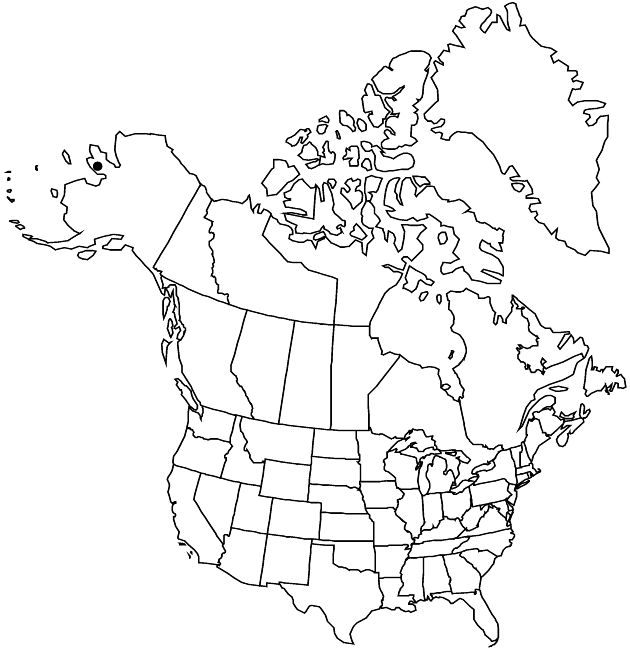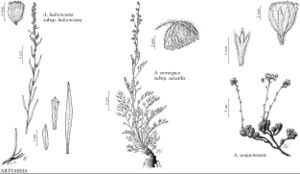Artemisia senjavinensis
Nouv. Mém. Soc. Imp. Naturalistes Moscou 3: 35. 1834.
Perennials, 30–90 cm (densely cespitose), mildly aromatic (caudices branched, woody, taprooted). Stems 1–9, erect, gray-green, lanate. Leaves mostly basal (in rosettes, cauline 2–5, scattered on flowering stems); blades (basal) broadly oblanceolate, 0.5–0.8 × 0.5–0.7 cm, relatively deeply lobed (lobes 3–5, acute; cauline blades 0.5–1 cm, entire or pinnately lobed, lobes 3–5), faces densely tomentose to sericeous (hairs 1–2 mm). Heads in corymbiform arrays 0.5–2.5 × 0.5–2.5 cm (subtended by white-sericeous bracts). Involucres turbinate, 3–4 × 3–5 mm. Phyllaries lanceolate or ovate, hairy. Florets: pistillate 4–5; bisexual 3–4; corollas yellow or tan, 1.5–2, glandular (style branches blunt, not fringed). Cypselae (brown) linear-oblong, ca. 2 mm, (apices flat), glabrous. 2n = 36, 54.
Phenology: Flowering mid–late summer.
Habitat: Open calcareous gravelly slopes in tundra or heath, sandy slopes above high tide
Elevation: 0–600 m
Distribution

Alaska, e Asia (Russian Far East, Chukotka).
Discussion
Artemisia senjavinensis is known only from western Alaska (Seward Peninsula) and the Chukchi Peninsula of the Russian Far East.
Selected References
None.
